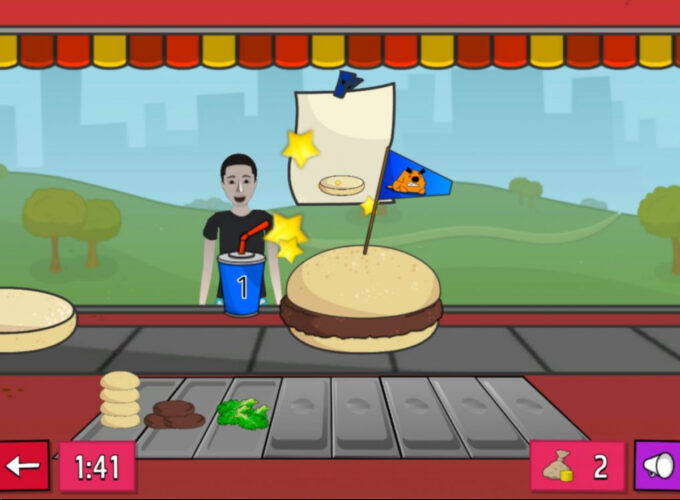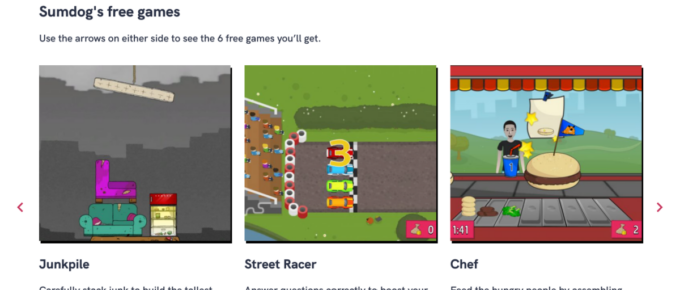This post may contain affiliate links. Please read our disclosure policy.
At 6:30 this morning, I sent my brother a text: “Hey, Tim! Are you up? Quick question… What’s the best way to help when teaching kids math? What would you say is the most important thing for kids who are struggling in math to understand it better?”
His reply: “Wow. That’s a loaded question.” Of course, he gave me his ideas on math help for kids, which I’m going to share with you today. I’m partnering with Sumdog to share these math tips and suggestions.

Understanding the areas of struggle with math for children is important to then understand how to help them. Not only will it help with their current math lesson (and math grades), but we all know how important it is for day to day use.
My brother, Tim Hoffman, has a Ph.D. in mathematics. When he began studying mathematics at Penn State University, I knew that it was a perfect fit for him. He went on to teach math… actually, he taught advanced math like calculus, to students. He then became a high school principal.

Yes. My brother has a doctorate in mathematics, my dad is a scientist with a degree in mathematics, and my mom is a nurse (which requires strong math skills). Even my husband has a degree in economics, which requires a solid understanding of math.
So… how is it that I struggled in math my entire life?
Math for Kids
As I watched our daughter “play” on a Sumdog, an online math and spelling practice tool aligned to all major curricula for ages 5 – 14, I had such a sense of gratefulness that she could have fun and learn at the same time.
I also liked knowing that she would improve her math understanding after reading a recent study demonstrating that using Sumdog for just 30 minutes a week almost doubled children’s fluency progress.

I think that math is often taught as “concepts” that aren’t a part of our daily lives. It’s up to us to change that, so our children will want to learn & grow in their math understanding.
Finding resources like Sumdog lets our children experience math as a part of their world, in a fun way that they may not see it otherwise. We want our children to see that mathematics is a natural, constant part of day-to-day life- not just a “class in school.”
I can remember sitting at my kitchen table, doing my homework. As a 6-year-old struggling with maths, it probably didn’t seem like a big deal. Math for kids seems easy, right? 2+2 equals 4. We all know that. Even if a student struggles with math facts at this age, the child’s teacher is typically quite confident that the student will “get it” as they continue to grow.
We tend to think that as students learn more, it’ll “just click” one day. I never clicked for me.

The next year, I was a 2nd grader struggling in math. My parents tried to help me understand it. I had a tutor who worked with me, as well. I usually ended up with a B in math (and the occasional C), but I never really understood it.
That year came & went. The next year, I was a 3rd grader struggling with math. Not much had changed. I was still getting by with B’s, while never really understanding the math problems and never understanding how they could help me in daily life.
What started out as a few learning difficulties of simple math concepts like addition and subtraction quickly gave way to a struggle in math, as each grade level builds on the previous years’ concepts.
The math homework that started as 2+2=4 was now filled with multiplication and division problems, and it just added to my math anxiety.
How To Help Your Child Learn Math
So, when I asked my brother this morning, he had great advice for his advice on helping with math for kids.
His first piece of advice… Always to have them show their work from a very young age. This is so important, as it can have an effect that is “devastating if they don’t learn it early.”
1. Remind Them To Show Their Math Work.
I don’t know how many times we’ve told our own children to “show your work.”
Tim said, “Students almost have a sense of pride that they can do math without showing their work.” While it may be easy “with one and two-step problems, this process builds the foundation for harder problems.”
I see this frequently in our children. They are so proud of themselves for “solving it in my head!” The truth is that they are just learning a bad habit when they don’t show the steps that they took to get to their answer.
I can’t tell you how many times I’ve heard my husband say to our children, “Where is your work? This answer is wrong, but I don’t see any work, so I can’t tell you why it’s wrong. You have to show your work.”
I want to understand where they are thriving and where they are struggling. When our children are working on Sumdog, I often review their work and activity. The powerful diagnostic tool makes it easy to identify strengths and areas for development quickly.

2. Remind Them To Keep The Work Organized
Tim suggested teaching children the importance of showing work in an organized way, “so their teacher and or parent can determine misunderstandings.”
Showing your work allows parents and teachers to see what you are doing. Teach your child to show their work in an organized way. We have our children do their math problems on graph paper.
My husband is constantly reminding our kids to be organized in their math work for the same reason that Tim gave. You can’t help your child if you can’t see where they have made their mistake. When the steps are clear, you can see where they are struggling.
3. Encourage Daily Practice.
Encourage daily practice. Just like reading daily, working on math daily is just a natural way to better ourselves. Show our children how you use math daily. When you measure, build, cook, etc. you are always using math.
Daily practice from a young age is important. However, if your child is older, start now.
You’re never too old to learn.
We started using Sumdog with our older kids because our youngest child was using it for school. They may be older, but the benefit remains the same.
I researched it and found that children who had averaged over an hour per week on Sumdog had made 1½ years’ curriculum progress. This is huge. While I am not a fan of a lot of screentime, I am a fan of screentime when used to help our children further their education.
When our children practice their math skills regularly on Sumdog, I know they are learning and understanding, even if they think they are just playing games. The research is clear.

It adapts questions, which are mapped to curricula standards, to each child, using engaging games to build their confidence, and it’s been shown to accelerate progress. The games are child-friendly and highly engaging – children don’t even realize they’re learning!
Build a Strong Foundation
I often hear parents say, “My child is struggling in math.” After checking that there are no learning disabilities, I encourage parents to dig into their child’s math foundation. Do they have a strong foundation?
It’s not uncommon for children to move onto a new concept without fully grasping the first concept. The problem is that when they move on without a solid understanding, they are building their math foundation on “the sand”, instead of “steady ground.”
Each math concept builds on one another, so a strong foundation is key. This is another reason why we supplement our children’s school math lessons with parent-led math practice & online math programs. Sumdog supports homeschoolers, students & parents.
To understand where students are struggling, Sumdog begins by giving children games that make up a diagnostic test to find the child’s right level. Parents can then see how much time their child has spent answering the questions, how many questions were answered, and how accurate they were in their answers.

Supplement with online resources
Parents can find a lot of online resources! Just a quick search will give you loads of math worksheets, math games, and math programs. Many of these resources are free or have a free trial. Sumdog offers parents the option to sign up for a free account to prioritize key maths facts and reinforce essential knowledge and skills. It can be accessed on a computer, smartphone, or tablet.
With Sumdog’s free account option, students will have access to six games.

They will be rewarded for their accuracy. You can also purchase a family subscription for $6/month per child. The family subscription includes 25 games, plus it gives parents the ability to set work, see progress, and target specific skills. The family subscription also gives you access to Sumdog’s spelling and grammar programs.
Give Them a Fresh Start
As parents, it’s up to us to give our children a fresh start at math. It’s up to us to give them a glimpse into what math could be… and the way to do that is to stop telling them that we are not good at math. We have to stop telling them that we don’t like math, but instead, let them see how they do with it.
When we tell our children or students that we are not good at math, they assume that they hold the same fate. They develop math anxiety. The National Mathematics Advisory Panel of the U.S. Department of Education found that even when students knew the material, they performed lower if they were anxious.
One study found that children who received math help from parents with math anxiety had lower results and weaker math achievements than their classmates.
Parents’ mathematical anxiety can have a similar effect on their children. Researchers observed that children who received math homework help from mathematically fearful parents showed weaker math achievements than their peers,
With the many games and resources available, and with all of the knowledge that you now have, it is your turn to give your child a fresh start. Let them experience the joy of mathematics. Let them gather their own conclusions and find themselves in the vast world of math.














